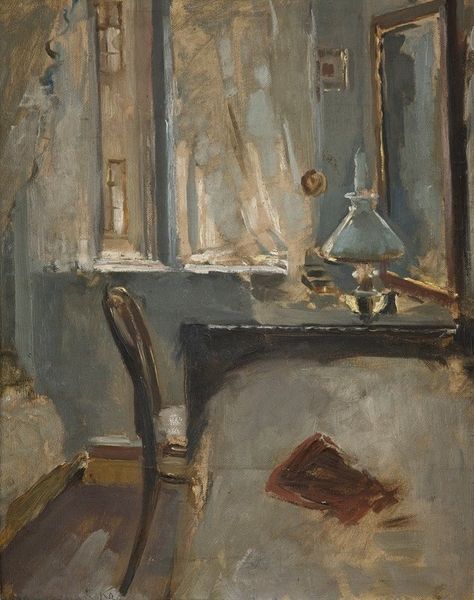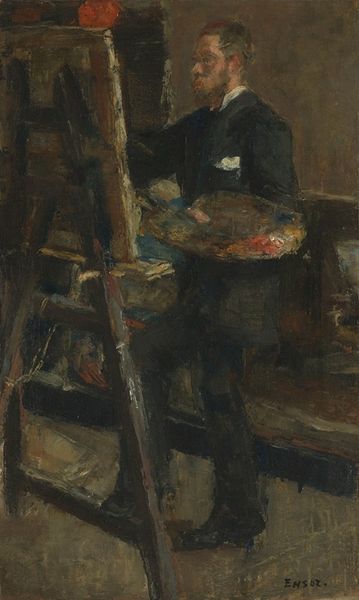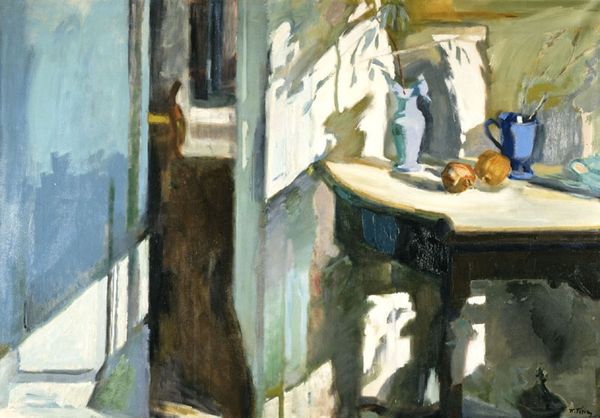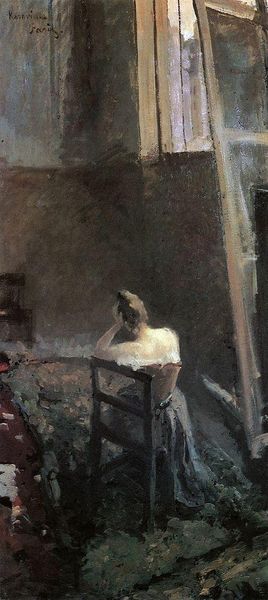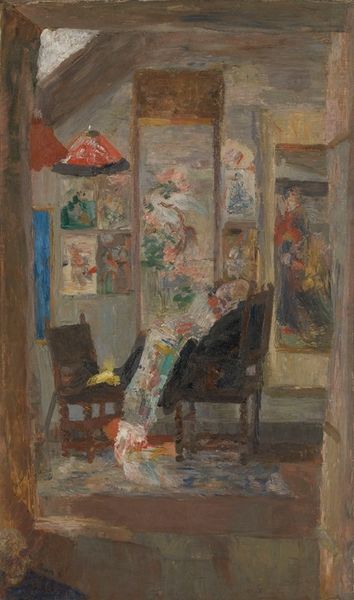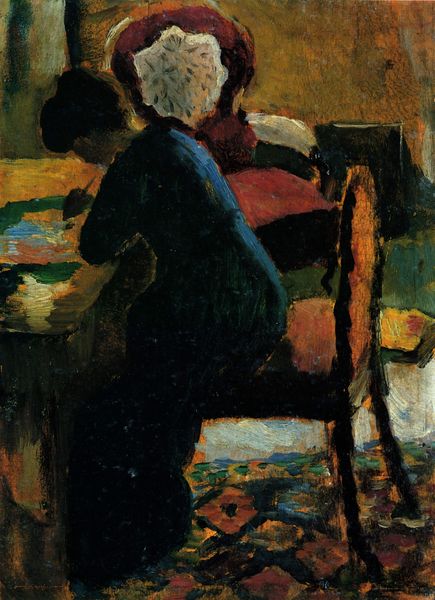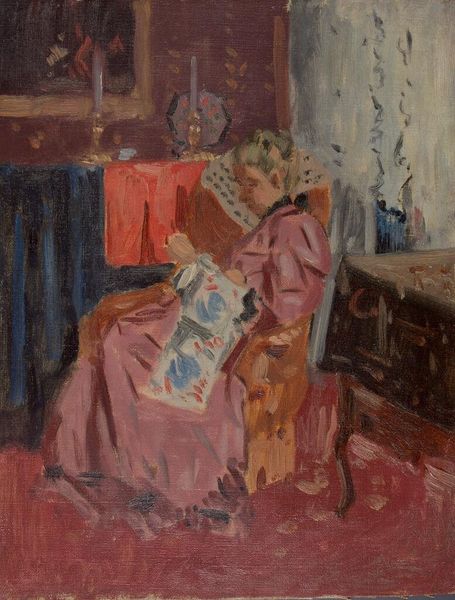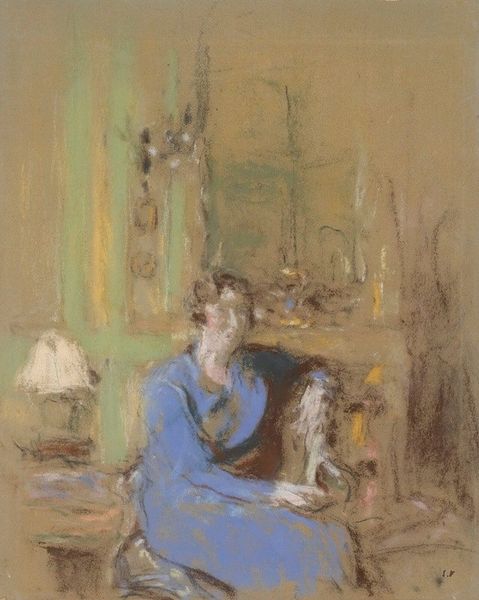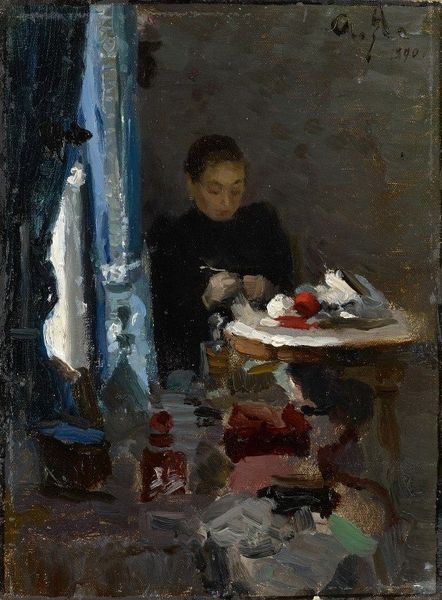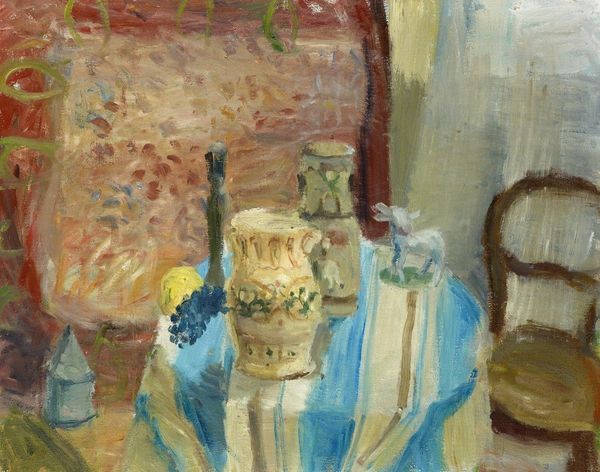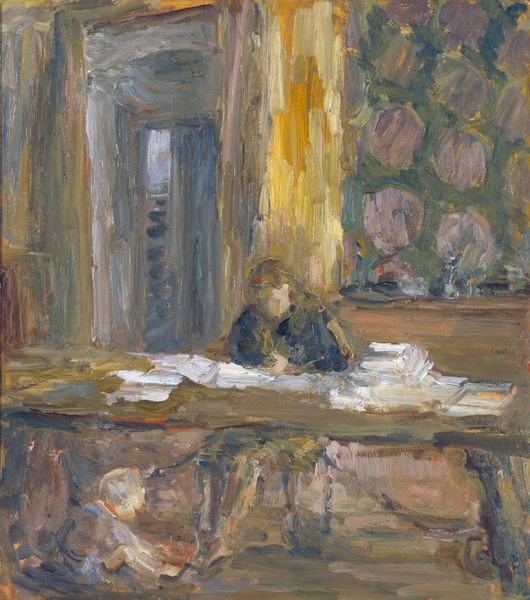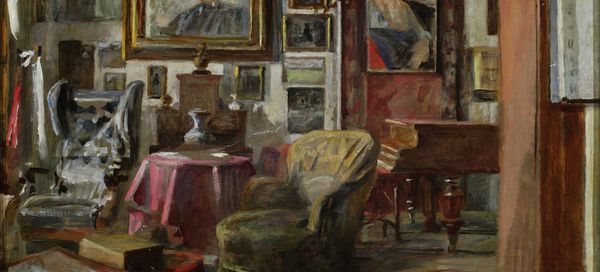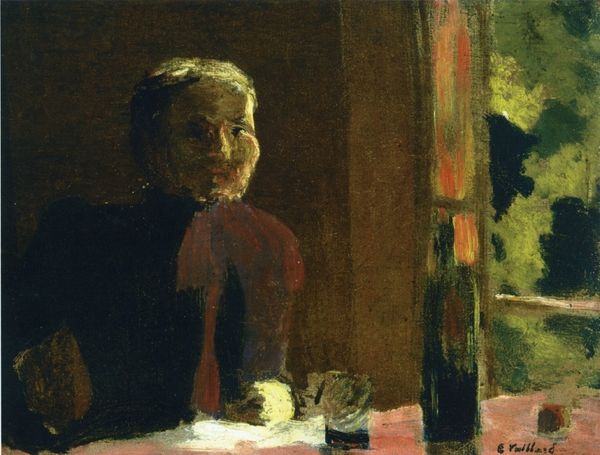
Copyright: Public Domain: Artvee
Editor: This is "The Hospital Room" by Edvard Munch, painted in oil between 1885 and 1886. The visible brushstrokes and muted palette definitely contribute to a somber mood. How would you approach understanding this piece? Curator: I’m drawn to how Munch manipulates the very materiality of the oil paint itself to convey meaning. The way the paint is applied so thinly in some areas and thickly in others, it gives the impression of transience and decay. Think about the social context of illness in the late 19th century. Editor: Yes, I do appreciate the texture and impasto. Curator: Precisely! Consider the availability of materials: Did Munch use mass-produced paints, or did he mix his own? Also, it is interesting how Munch challenged conventional ideas about art in a historical genre. What would a classically trained painter make of the application of such coarse texture? Editor: So you’re saying the materials themselves and their application tell a story about artistic choices and perhaps a rebellion against academic standards? Curator: Exactly. It prompts a further analysis. This work can challenge viewers to consider their preconceived notions about value and labour in the realm of art. Do you think he selected inexpensive canvas that may or may not last the centuries? Was this work for his own exploration only or was this destined for public display? Editor: I never thought about it that way, considering the physical qualities of the painting as its own language, and reflecting societal tensions of its time. It makes the work much richer! Curator: Agreed. Analyzing the production and social framework behind an artwork provides an enriching and new lens of thought.
Comments
No comments
Be the first to comment and join the conversation on the ultimate creative platform.
